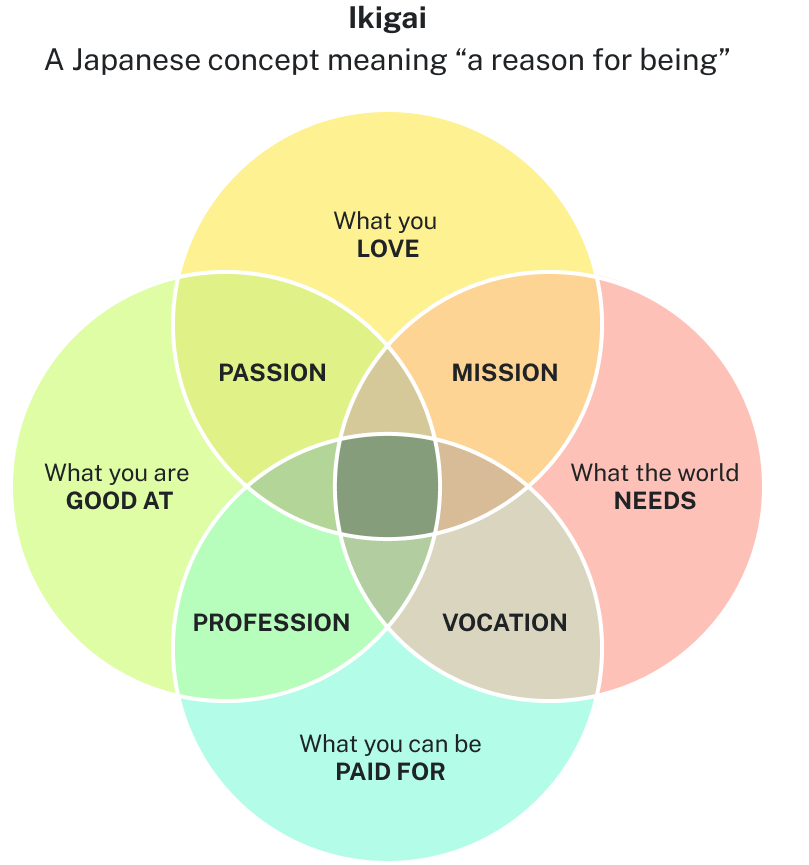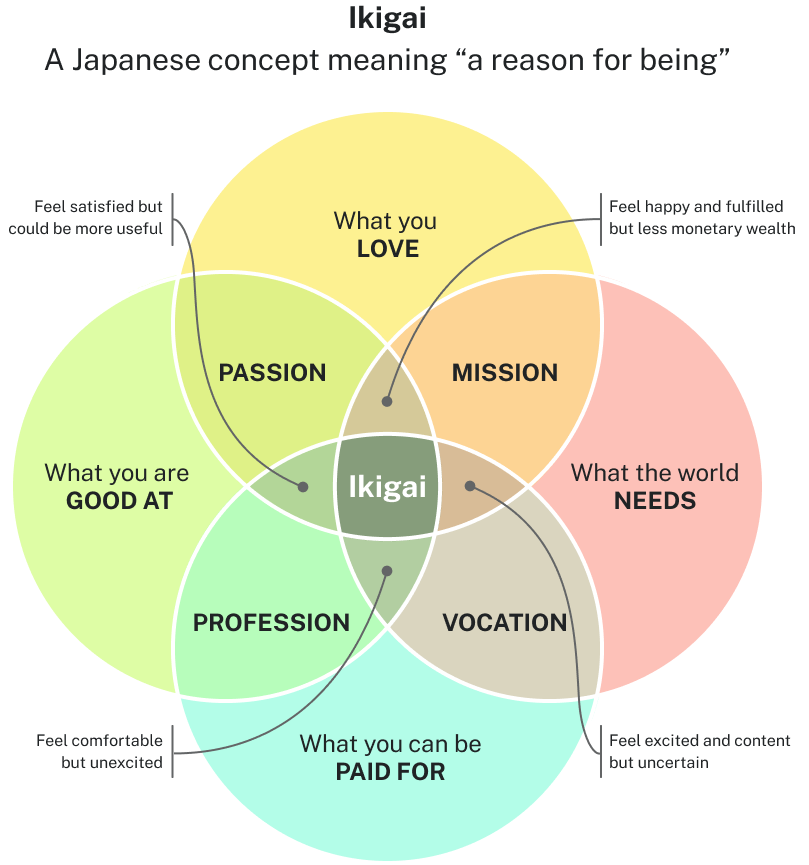- Learn when to use tables, charts, diagrams, and infographics
- Determine the best visual aid to present your data
- Understand how the placement, style, and color of graphics affect your message
- Learn about the importance of using descriptive captions and titles with graphics
Improving a Diagram[1]
Ikigai is a Japanese concept that means “a reason for being.” It refers to something that gives a person a sense of purpose and fulfillment. Ikigai is often illustrated as the convergence of four elements: what you love, what you are good at, what the world needs, and what you can be paid for. When all these elements overlap, it creates a sense of purpose and satisfaction in life.
Let’s consider how to display this concept in a Venn diagram.

The diagram clearly shows the four main elements and is easy to understand. However, the diagram does not label the areas where two or more circles overlap and the color scheme could be improved. The diagram also has no information in the caption that helps to explain what the diagram means.

This diagram has been improved with the addition of a title and subtitle to clearly label what the diagram presents. It introduces labels for the areas where the circles overlap, adding more depth to the concept. It also uses more vibrant colors. However, the central area is not labeled and the diagram could benefit from some additional explanation to provide better context.

This diagram not only labels the overlaps but also provides additional context for each overlapping area, explaining the feelings associated with each intersection. The central area representing Ikigai is clearly labeled, making it obvious what the final goal is.
Is the caption for Figure 3 necessary?
- Adapted from Developing and Managing Knowledge and Practice of Care-giving: The Case of Filipina Domestic Workers in Singapore Committee Members - Scientific Figure on ResearchGate. Available from: https://www.researchgate.net/figure/IKIGAI-A-Japanese-concept-meaning-A-Reason-for-Living-This-figure_fig3_331982903 [accessed 17 Jun, 2024] ↵